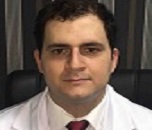Theme: Explore & Expand your knowledge at Alzheimer’s Diseases
Alzheimer’s disease 2021
On behalf of the Conference Organizing Committee, It is our pleasure to welcome you to the 15th International Conference on Alzheimer’s Disease and Dementia during October 06-07, 2021 in London, UK with amalgamation of eminent researchers.
Alzheimer’s disease 2021 is to deliver an outstanding program for exchange of ideas and authoritative views by leading scientists which covers the entire spectrum of research in Alzheimer’s disease and Dementia and share the cross-cultural experiences of various treatment procedures. With the theme “Explore & Expand your knowledge at Alzheimer’s Diseases”.
Alzheimer’s disease 2021 is an annual meeting of Neurologists as well as Neurology committees to discuss the future of the Alzheimer’s disease and Dementia in terms of collaboration, structures and organizational development and advances of Neurology.
Dementia, including Alzheimer’s disease, is one of the biggest global public health challenges facing our generation. Worldwide, at least 44 million people are living with dementia this number is expected to double by 2030 and more than triple by 2050 to 115 million. In 2011, an estimated 747,000 Canadians were living with Alzheimer’s or other alternative dementias by 2031, it is predictable that 1.4 million Canadians will have dementia. In Canada 72% of Alzheimer's sufferers are women and 62% of dementia cases are also women. Much of the increase will be in developing countries like Western Europe and North America. Already 62% of people with dementia live in developing countries. Today, over 35 million people worldwide currently live with the condition. This number is predicted to double by 2030 and more than triple by 2050 to 115 million. No treatments available to slow or stop the brain damage caused by Alzheimer’s disease, several medications can temporarily help improve the symptoms of dementia for a few individuals. In two decades, it is predictable that 1.4 million Canadians will have dementia, costing the economy almost $300 billion per year. Globally, dementia cost $600 billion a year.
Vascular dementia is widely considered the second most common cause of dementia after Alzheimer's disease, accounting for 10 percent of cases. Many specialists believe that vascular dementia remains underdiagnosed like Alzheimer's disease even though it's recognized as common.
Alzheimer’s disease 2021 provides more updates about Alzheimer’s and dementia care and research.
Why to attend?
We strive to make Alzheimer’s disease 2021 a success, with your support and high quality talks from both Alzheimer’s disease and Dementia communities. During the conference, we assure you that you will experience world class facilities and hospitality at the conference.
The Conference will feature many exciting academic programs including multiple panels, workshops, affinity group lunches, paper presentations, and scientific sessions by reputed neurologists and neurosurgeons from all over the country.
Alzheimer’s disease 2021 Highlights includes:
- IOCM Certification
- One on One Meeting with Eminent Speakers from 40 Countries
- Live Streaming of the conference
- Keynote sessions by world’s most eminent researchers at Alzheimer’s disease and Dementia research
- Top Industries Representation
- Thought provoking Symposia’s and Workshops
- Preconference workshops in all major countries
- Nominations for Best Poster Award
- Outstanding Young Researcher Award
- Group Registration benefits
Your attendance and participation will be greatly appreciated as we seek to strengthen the expertise in field of Alzheimer’s disease and Dementia!!
Target Audience:
- Neurologists and Directors
- Physicians
- Neuroscientists
- Specialists
- Researchers
- Healthcare professional
- Professor
- Industrial Expert
- Neurosurgeons
- Psychiatrist
- Nutritional Scientists
- Lecturers and Students from Academia in the study of Dementia
- Students from Academia in the research of Neurology
- Neuro Physiotherapists
Alzheimer Association & Societies around the Globe
- Alzheimer's Australia
- Albanian Alzheimer Society
- Association de Lucha contra el Mal de Alzheimer
- Foundation Alzheimer Aruba (FAA)
- Alzheimer's Australia
- Alzheimer Austria
- Alzheimer Support Group
- Alzheimer Society of Bangladesh
- Barbados Alzheimer's Association Inc.
- Alzheimer’s and Dementia Association of The Cayman Islands
- Ligue National Alzheimer Liga
- Alzheimer's Family Support Group
- Association Bolivian de Alzheimer Otras Dementias
- FEBRAZ - Federico Brasilia de Associaçãoes de Alzheimer
- Corporation Alzheimer Chile
- Alzheimer's disease Chinese
- Alzheimer Association & Societies in Canada
Track 1: Alzheimer’s disease
Alzheimer’s disease (AD), likewise referred to just as Alzheimer's, is a chronic neurodegenerative illness that typically begins gradually and get serious over time. It is the reason for 60% to 70% of cases of dementia. The most widely recognized early side effect is trouble in recollecting recent event short-term memory loss. As the disease getting worse, indications can incorporate issues with language, disorientation (counting effectively getting lost), mood swings, and loss of inspiration, not overseeing self-care, and conduct issues. As an individual's condition decreases, they frequently pull back from family and society. Slowly, bodily function is lost, at last leading to death.
Track 2: Causes and Prevention of Alzheimer’s
Alzheimer's is caused by brain cell death. It is a neurological disorder in which the death of brain cells causes memory loss and cognitive decline. The size of the brain shrinks in Alzheimer's, nerve cells and connections in the tissue progressively reduced, which cannot be seen or tested in the living brain affected by Alzheimer's disease, post-mortem/autopsy will always show tiny inclusions in the nerve tissues, called as plaques and tangles. Plaques are found between the dying cells in the brain - from the build-up of a protein called beta-amyloid (amyloid plaques). The tangles exist in the brain neurons, from a disintegration of second protein, called tau.
Track 3: Managing Dementia
Dementia is the term used to describe the symptoms of a number of conditions that affecting the brain. The commonly seen condition is Alzheimer’s, and other includes Parkinson's disease. Symptoms seen at early stages are personality changes, withdrawal, memory loss, confusion and apathy. Early diagnosis helps with providing early treatment, support and planning. Medications might help with some symptoms of dementia, but no permanent cure. Vascular dementia is the second most common cause of dementia in older people. Vascular dementia occurs when vessels that provide blood to the brain become blocked or narrowed. Because it has a lower profile than Alzheimer's, many people don't suspect vascular dementia when forgetfulness becomes problematic. It's also difficult to diagnose so it's difficult to know exactly how many people suffer from vascular dementia.
Track 4: Alzheimer’s disease Diagnosis and Symptoms
Alzheimer’s disease is that the commonest type of dementia, it is a serious brain disorder and it impacts daily living through memory loss and cognitive changes. Although not all memory loss indicates Alzheimer’s disease, one in ten people over 65 years of age, and over half of those over 85 have Alzheimer’s illness.
There is no single test that can show whether a person has Alzheimer's. While physicians can almost always determine if a person has dementia, it may be difficult to determine the exact cause. Diagnosing Alzheimer's requires careful medical evaluation, including medical history, mental status testing, physical and neurological exam, blood tests and brain imaging.
Symptoms of Alzheimer’s disease usually develop slowly and gradually worsen over time, progressing from mild forgetfulness to widespread brain impairment. Chemical and structural changes within brain slowly destroy the ability to create, remember, learn, reason, and relate to others. As critical cells die, drastic personality loss occurs and body systems fail.
Track 5: Alzheimer’s disease Imaging
Scientists look at the brain’s grey matter when investigating about Alzheimer’s disease. A fresh study, found that degenerating white matter in the brain could be an early indicator of disease. A study was published in Radiology which concludes that white matter plays an important role in how the disease strikes and progresses. Abnormal deposits of proteins that form amyloid plaques and tau tangles all over the brain in Alzheimer’s disease. It can also be characterized by shrinkage of brain tissues due to neurons loss.
Track 6: Alzheimer’s disease Pathophysiology and Disease Mechanisms
Alzheimer’s disease (AD) is a progressive dementia with loss of neurons and the presence of two main microscopic neuropathological hallmarks: extracellular amyloid plaques and intracellular neurofibrillary tangles. Early onset AD, a rare familial form, is caused due to mutation of one out of three genes: (amyloid precursor protein), (presenilin 2) or (presenilin 1). Sporadic form occurs usually after age of 65 and accounts for most cases; it most likely results from a combination of genetic and influence of enviornment. Confirmed risk factors for sporadic AD are age and the presence of the E4 allele of (Apo lipoprotein E). Amyloid plaques comprise mainly of the neurotoxic peptide amyloid (Aβ, Abeta), cleaved sequentially from a larger precursor protein (APP) by two enzymes: β-secretase (also called BACE1) and γ-secretase (comprising four proteins, presenilin is one of them). If APP is first cleaved by the enzyme α-secretase rather than β-secretase then Aβ is not formed.
Neurofibrillary tangles comprise mainly of the protein tau which binds with microtubules, which facilitating the neuronal transport system. Tau uncoupling from microtubules and aggregation into tangles inhibits transport and results in disassembly of microtubule. Phosphorylation of tau might have an important role in this. Selective vulnerability of neuronal systems such as the cholinergic, serotonergic, and noradrenergic and glutamatergic systems form the basis of current rational pharmacological treatment.
Track 7: Amyloid Protein in Alzheimer’s and Dementia
The amyloid plaques and neurofibrillary tangles formation are thought to contribute to the degradation of the neurons (nerve cells) in the brain and the subsequent symptoms of Alzheimer's disease.
Amyloid Plaques: One of the hallmarks of Alzheimer's disease is the accumulation of amyloid plaques between nerve cells (neurons) in brain. Amyloid generally indicates protein fragments that the body produces normally. Beta amyloid is a protein fragment from an amyloid precursor protein (APP). In a healthy brain, these protein fragments are broke down and get eliminated. In Alzheimer’s, the fragments gets accumulated to form hard & insoluble plaques.
Neurofibrillary Tangles: Neurofibrillary tangles are insoluble twisted fibers found inside the brain's cells, consisting primarily of a protein called tau, which forms structure called a microtubule. Transport of nutrients and other important substances from one part of the nerve cell to another done by help of microtubule. In Alzheimer's disease, the tau protein is abnormal and results in collapse of the microtubule structures.
Track 8: Geriatrics and Cognitive Disorder
Geriatrics or geriatric medication may be a specialty that focuses on health care of older people. It aims to push health by preventing and treating diseases and disabilities in older adults. there's no set age at that patients is also underneath the care of a specialist or geriatric MD, a MD United Nations agency makes a speciality of the care of older people. Rather, this call is set by the individual patient’s needs, and therefore the availableness of a specialist. It’s vital to notice the distinction between gerontology, the care of aged people, and geriatrics, that is that the study of the aging method itself.
Cognitive disorders are a class of mental state disorders that primarily have an effect on learning, memory, perception, and drawback determination, and embody blackout, dementia, and delirium. Whereas anxiety disorders, mood disorders, and psychotic disorders can even have an effect on psychological feature and memory functions, the DSM-IV-TR doesn't contemplate these psychological feature disorders, because loss of cognitive function is not the primary (causal) symptom. Causes vary between the various sorts of disorders however most include damage to the memory parts of the brain. Treatments rely on however the disorder is caused. Medication and therapies are the foremost common treatments but, for a few sorts of disorders like amnesia, treatments will suppress the symptoms however there is presently no cure.
Track 9: Care Practice and Awareness
Persons with dementia have multiple psychological feature deficits that include each memory impairment, that affects the flexibility to find out new info or recall information previously learned, and one or additional of the subsequent symptoms-aphasia, apraxia, agnosia, or executive dysfunction-such that the psychological feature deficits negatively have an effect on social or activity functioning with a big decline in previous talents. Additionally, persons with dementia typically suffer from comorbid conditions that additional complicate care and impede best outcomes. Therefore, developing caregiving methods people with dementia is urgent, given this increasing prevalence and therefore the associated burden that dementia places not only on the individuals, however on the caregivers, relations, and therefore the resources of the health care system. Conventional views bearing on geriatric nursing typically paint an image of the care as being slow paced certain and less demanding than acute care. However, care of the aged, and particularly those with dementia, is usually complicated, unpredictable, and unstable.
Track 10: Therapeutic Targets and Mechanisms for Treatment
Alzheimer's disease is a progressive neurodegenerative disease that is characterized histopathologically by the presence of plaques, mainly composed of Abeta amyloid and the tangles, mainly composed of hyperphosphorylated tau. To date, there is no treatment that can reverse the disease, and all the current therapeutics is directed to cope with the symptoms of the disease. Here we describe the efforts dedicated to attack the plaques and, in more detail, the process of neurofibrillary degeneration, linked to the presence of the hyperphosphorylated microtubule associated protein tau. We have identified the different putative targets for therapeutics and the current knowledge on them.
Treatment for Alzheimer's disease is entering a new and exciting phase, with several new drugs beginning clinical trials. Many of these new therapies are based on our best current understanding of the pathogenesis of Alzheimer's disease, and are designed to try to either slow or halt the progression of the disease. There are several different theories underlying the current efforts, and these are briefly reviewed. Therapies directed against some aspect of beta-amyloid formation, against neurofibrillary tangle formation and against the inflammatory response are all considered, as are the problems associated with each area. It is as yet unclear which, if any, of these approaches will be successful, but the high level of activity in each of these three fields provides some hope that an effective treatment for Alzheimer's disease is on the horizon.
Track 11: Animal Models and Translational Medicine
Animal models for Alzheimer’s disease it is important to think about the human phenotype and what is being modeled in terms of the animal phenotype. The moderator, Bradley Hyman, professor of neurology at Harvard Medical School, said that animal models of Alzheimer’s disease, based on the genetics of the disease and the closely related frontotemporal dementia, replicate at least some of the pathology. Researchers have been successful at modeling very specific aspects of Alzheimer’s disease in the mouse (e.g., plaques, tangles). Although these are incomplete models of the human disease, they have been well received in the field as potentially relevant models for use in drug discovery.
Patients with Alzheimer’s disease will display both amyloidopathy and tauopathy; however, scientists often focus, in a reductionist way, on one or the other in an animal model. A participant added that even though the anatomy in the mouse is different than the human, mutant tau mice are relatively good models in that they recapitulate tau-dependent neurodegeneration. This has led a number of companies to focus on antibodies that block tau-dependent neurodegeneration in these mouse models.
Track 12: Neurodegenerative Diseases
Neurodegenerative disease causes your mind and nerves to crumble after some time. They can change your character and cause confusion. They can likewise decimate your brain tissue and nerves. Some brain disease, for example, Alzheimer's disease, may develop as you getting old. They can gradually debilitate your memory and thought process. Different disease, for example, Tay-Sachs disease, is hereditary and starts at an early age.
Track 13: Vascular Dementia
Vascular dementia is a general term describing problems with reasoning, planning, judgment, memory and other thought processes caused by brain damage from impaired blood flow to your brain. You can develop vascular dementia after a stroke blocks an artery in your brain, but strokes don't always cause vascular dementia. You can develop vascular dementia after a stroke blocks an artery in your brain, but strokes don't always cause vascular dementia. Whether a stroke affects your thinking and reasoning depends on your stroke's severity and location. Vascular dementia can also result from other conditions that damage blood vessels and reduce circulation, depriving your brain of vital oxygen and nutrients.
Track 14: Current Research in Therapeutic Targets
Alzheimer's disease (AD) starting at now shows one of the best therapeutic administrations issues in the created nations. There is no effective treatment prepared for backing off contamination development. Starting late the crucial focus of research on novel pharmacotherapies relied upon the amyloid genic hypothesis of AD, which puts that the beta amyloid (Aβ) peptide is essentially accountable for abstract impediment and neuronal end. The target of such drugs is (a) to reduce Aβ creation through the restriction of β and γ secretes synthetic concoctions and (b) to propel breaking down of existing cerebral Aβ plaques. In any case, this methodology has ended up being simply unpretentiously reasonable. Late examinations propose an alternative strategy focused on the limitation of the downstream Aβ hailing, particularly at the neural association. Aβ oligomers may cause degenerate N-methyl-D-aspartate receptor (NMDAR) commencement postsynaptically by forming structures with the telephone surface prion protein (PrPC). PrPC is improved at the neuronal postsynaptic thickness, where it works together with Fyn tyrosine kinase. Fyn sanctioning happens when Aβ is bound to PrPC-Fyn complex. Fyn causes tyrosine phosphorylation of the NR2B subunit of metabotropic glutamate receptor 5 (mGluR5). Fyn kinase blockers masitinib and saracatinib have wound up being successful in treating AD symptoms in preliminary mouse models of the ailment.
Track 15: Alzheimer’s disease and Type 2 Diabetes
Alzheimer's disease (AD) and type 2 diabetes mellitus (T2DM) are extraordinarily dominating developing related disease related with gigantic dismalness and mortality. A couple of discoveries in human and animal models have associated T2DM to AD-type dementia. Despite epidemiological connection between the T2DM and mental weakness, the interpretational instruments are unclear. The commonness of evidence in longitudinal assessments with dismemberment confirmation has indicated that vascular parts, rather than excellent AD-type pathologies, underlie the psychological decay frequently found in self-revealed T2DM. T2DM is related with cardiovascular and cerebrovascular infection (CVD), and is related with extended risk of infarcts and little vessel illness in the brain and various organs. Neuropathological evaluations of after death cerebrums demonstrated proof of cerebrovascular sickness and no relationship among T2DM and β-amyloid stores or neurofibrillary tangles. Before long, the parts upstream of early AD-express pathology stay obscure. In such way, there may to be certain be spread between the pathologic frameworks of T2DM/"metabolic issue," and AD.
Track 16: Front temporal Dementia
The nerve cell harm caused by frontotemporal dementia prompts loss of capacity in these mind areas, which dynamically cause weakening in conduct and identity, dialect unsettling influences, or changes in muscle or engine capacities. There are various diverse sicknesses that reason frontotemporal degenerations. The two most conspicuous is 1) a gathering of cerebrum issue including the protein tau and 2) a gathering of mind issue including the protein called TDP43. For reasons that don't seem to be however notable, these 2 gatherings have Associate in Nursing inclination for the frontal and momentary projections that reason insanity.
Track 17: Insulin Resistance on the development of Alzheimer’s disease
Convincing preclinical and clinical confirmation underpins a pathophysiological association between Alzheimer's disease (AD) and diabetes. Modified digestion, aggravation, and insulin resistance are key neurotic components of the two maladies. For a long time, it was for the most part considered that the cerebrum was unfeeling to insulin; however it is presently acknowledged that this hormone has focal neuromodulatory capacities, incorporating parts in learning and memory, which are debilitated in Alzheimer's Disease. Be that as it may, up to this point, the sub-atomic components representing cerebrum insulin resistance in AD have stayed tricky. Here, we survey late proof that reveals insight into how cerebrum insulin brokenness is started at an atomic level and why anomalous insulin flagging comes full circle in synaptic disappointment and memory decay. We likewise examine the phone premise basic the gainful impacts of incitement of cerebrum insulin motioning on perception. Disclosures outlined here give pathophysiological foundation to recognizable proof of novel sub-atomic targets and for improvement of option helpful methodologies in AD.
Alzheimer’s is a form of disease that affects the functioning of the brain resulting in decline in memory or other thinking skills. Alzheimer’s disease is the most common and largest form of dementia (in over 60% cases), which is observed among people aged 65 years and above. Accumulation of a protein called beta amyloid, in the spaces between nerve cells due to genetic mutation is a major cause of dementia. Although dementia disease is not treatable, symptomatic treatment is followed in all cases. Research is being carried out to develop treatment centered on the role of beta-amyloid in dementia.
The global dementia drugs market estimated to be valued at US$ 13,900.0 million in 2017 and is expected to witness a CAGR of 8.4% over the forecast period (2018–2026).
Alzheimer's Disease and Therapeutic Market
GlobalData estimated sales of Alzheimer Disease therapeutics in 2016 to have been around $3 billion over the seven major markets (7MM), which are the US, the five major European markets (5EU: France, Germany, Italy, Spain, and UK), and Japan. By 2026, Global Data foresees the AD market will have developed at a solid Compound Annual Growth Rate (CAGR) of 17.5%, arriving at sales of $14.8 billion over the 7MM. This is mostly credited to the developing pervasiveness of both AD and mild cognitive impairment (MCI) and the quick take-up of biologics and other novel disease therapies (DMTs)
The Alzheimer's Therapeutics Market is required to reach USD 12.43 Billion by 2026, as indicated by another report by Reports and Data. This can be essentially connected with the developing pipeline drug development, investment in biomarkers for drug development which are expected to further quicken the market development globally. Based on statistics, increase in advanced diagnostics for early identification, along with more scientific drug development, and emerging innovative diagnostics technologies are additionally a portion of the elements that are likewise developing the size of the worldwide market.
Importance and Scope:
Dementia is a general term that depicts a social affair of reactions, for instance, loss of memory, judgment, tongue, complex motor capacities, and other insightful limit caused by the enduring mischief or going of the cerebrum's nerve cells, or neurons. Dementia, including Alzheimer's disease, is one of the best overall general prosperity challenges standing up to our period.
All around, eventual outcomes of a current meta-examination prescribe that 44 million people lived with dementia worldwide in 2010, with numbers foreseen that would twofold at standard interims, to 65.7 million of each 2030 and 115.4 million out of 2050. In 2010, 58 percent shockingly with dementia lived in countries with low or focus compensation, with this degree predicted to rise to 63 percent in 2030 and 71 percent in 2050. This number is depended upon to twofold by 2030 and more than triple by 2050 to 115 million.
In the United States alone, experts gage that upwards of five million people age 65 and more settled experience the evil impacts of Alzheimer's affliction The AD advertise has an absence of helpful alternatives. Which classes of medication overwhelm the market?
For conference attendance and participation only Business Visa should be applied. Contact your nearest travel agent/visa information center/ Czech Republic Embassy for the correct application form.
All visas for visiting / Czech Republic shall be processed by respective authorities only upon submission of proper documents through proper channel.
In case of non-furnishing of documents, non-adherence to guidelines visas shall be cancelled by respective authorities.
The minimum supportive documents that might be required while applying for / Czech Republic visa include:
Letter of invitation,
Abstract acceptance letter (if speaker),
Registration payment receipt,
Accommodation confirmation letter issued under conference letter head.
For letter of invitation and accommodation confirmation, payment of registration fees and accommodation charges is a pre-requisite.
Conference Highlights
- Alzheimer’s disease
- Causes and Prevention of Alzheimer’s
- Managing Dementia
- Alzheimer’s disease Diagnosis and Symptoms
- Alzheimer’s disease Imaging
- Alzheimer’s disease Pathophysiology and Disease Mechanisms
- Amyloid Protein in Alzheimer’s and Dementia
- Geriatrics and Cognitive Disorder
- Care Practice and Awareness
- Therapeutic Targets and Mechanisms for Treatment
- Animal Models and Translational Medicine
- Neurodegenerative Diseases
- Vascular Dementia
- Current Research in Therapeutic Targets
- Alzheimer’s disease and Type 2 Diabetes
- Front temporal Dementia
- Insulin Resistance on the development of Alzheimer’s disease
To share your views and research, please click here to register for the Conference.
To Collaborate Scientific Professionals around the World
| Conference Date | October 06-07, 2021 | ||
| Sponsors & Exhibitors |
|
||
| Speaker Opportunity Closed | |||
| Poster Opportunity Closed | Click Here to View | ||
Useful Links
Special Issues
All accepted abstracts will be published in respective Our International Journals.
Abstracts will be provided with Digital Object Identifier by













